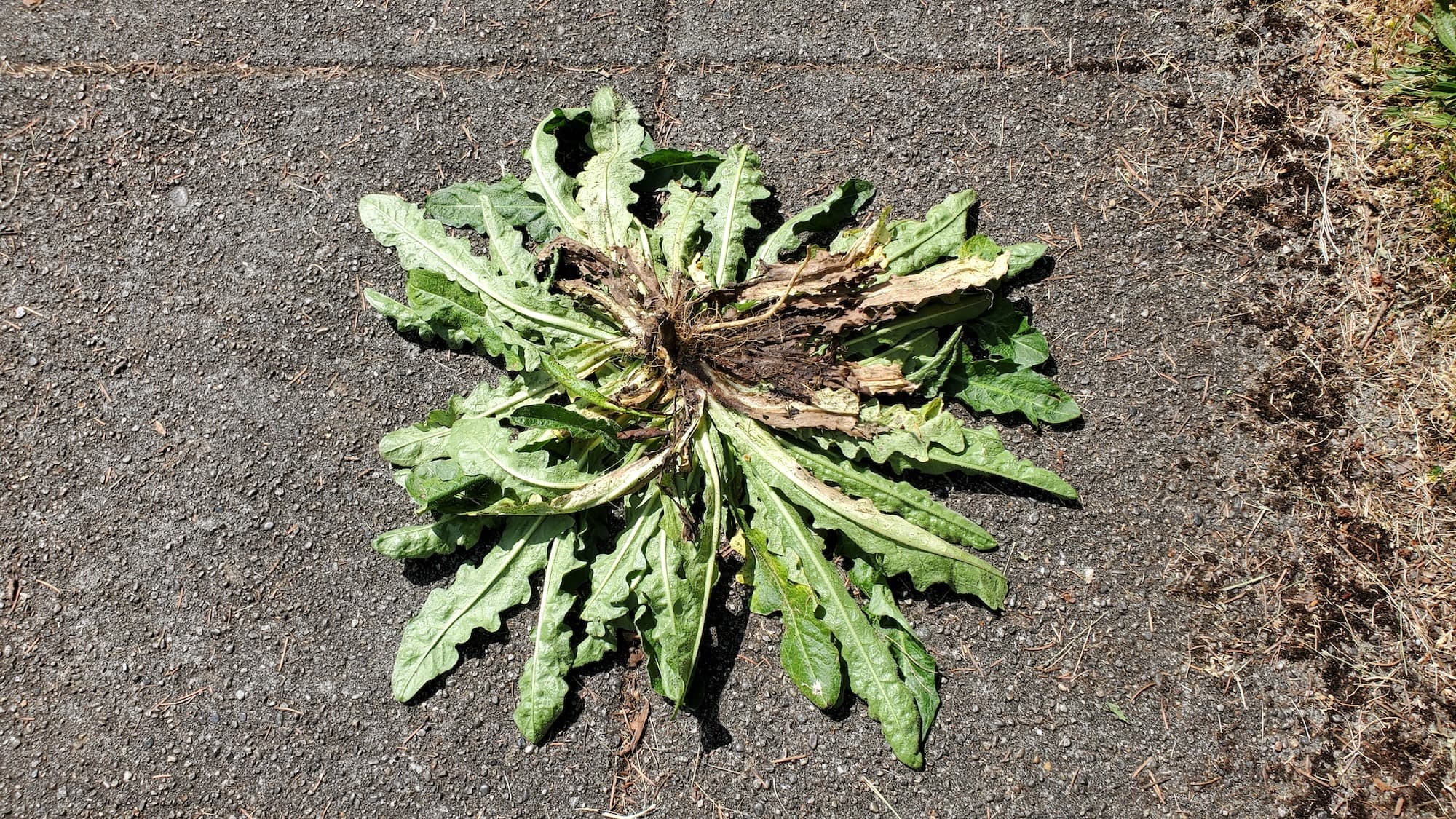West Seattle Tree-of-heaven removal
Homeowner’s Issue
Tree-of-heaven (Ailanthus altissima) shows up across West Seattle — from steep yards in Admiral and High Point to windy, salt-sprayed lots near Alki and the bluff above Lincoln Park. It tolerates compacted loam, poor soil and stands of ivy and blackberry that are common here. Wet winters and dry summers mean roots spread where soil pockets let them, then resprout aggressively after cutting. On slopes you’ll see multiple shoots from buried roots, which increases erosion risk and makes slopes unstable over time.
Homes near the Junction and Fauntleroy report seedlings in cracks, fences and tree wells; HOAs often object when the tree starts popping up en masse. Tree-of-heaven also grows fast and creates weak forks that shed branches during the seasonal wind and rain storms we get. Left unchecked it competes with native shrubs and outpaces desirable trees, increasing maintenance and reducing curb appeal. Mechanical removal and follow-up monitoring are essential because a single cut or one grinding pass rarely stops new shoots; sustainable, repeat mechanical control and replanting with Pacific-native shrubs are the reliable, non-chemical route here.
Our Quality Service
We remove Tree-of-heaven using mechanical methods only — no herbicides. Our crew uses chainsaws, pole saws, a stump grinder, tarps and hand tools to cut, grind and clear safely. For multi-stemmed trees or steep slopes we bring rigging and rope techniques to control fall zones and protect neighboring plants and fences.
Typical timelines: small single-stem trees usually one half-day; medium multi-stem trees a full day; large or cliffside jobs can take two days with staged grinding. Stump grinding is done same day when access allows. We schedule work to avoid the wettest forecasts and leave yards tidy the same day or the next. Benefits: improved safety, restored curb appeal, lower maintenance, and a site primed for native replanting that thrives in West Seattle’s microclimates.
What’s Included
- Onsite assessment and written estimate (photo estimates available).
- Safe tree felling or sectional dismantling.
- Stump grinding to below-grade to reduce regrowth.
- Site cleanup: woodchips, limb hauling, and swept work areas.
- Disposal: choice of haul-away or green-waste drop-off.
Options / Upgrades
- Soil amendment and planting hole prep for natives.
- Native replanting: Pacific ninebark, red-flowering currant, salal, Oregon grape (recommendations by site).
- Mulch application using recycled woodchips.
- Sheet-mulch/organic smothering for regrowth zones.
- Extended monitoring visits to cut new suckers (recommended first two seasons).
Before & After / Expectations
Expect noise, wood chips, and temporary disruption while we work. Access to the tree and safe parking for equipment matters — tight alleyways or narrow driveways may add time. We grind stumps to a workable depth but root masses can still produce sprouts; plan on two growing seasons of follow-up cutting or scheduled visits.
Aftercare for West Seattle: plant in early fall or late winter for best establishment; use 2–4” of mulch (kept off trunks) to conserve moisture through dry summers. Check for suckers monthly during spring and summer — cut them off at the base to exhaust root reserves. Watch shady corners for moss and ivy; sheet-mulching and planting shade-tolerant natives like sword fern reduce future invasions.
FAQs (3–5)
Q: How much does removal cost?
A: Small trees commonly run a few hundred dollars; multi-stem or steep-site jobs can reach over a thousand. We give a clear written quote after inspection or photo review.
Q: Will it regrow after cutting or grinding?
A: Yes, Tree-of-heaven resprouts from roots. Stump grinding plus scheduled follow-up cuts or planting competitive natives is the sustainable way to prevent return.
Q: Do you use herbicides?
A: No. We use mechanical removal, grinding, smothering and repeat cutting only.
Q: Do I need a permit or HOA approval?
A: Sometimes. Large trees, street trees or protected species may need permits. We’ll advise on permits and HOA requirements during the estimate.
Call to Action
If you have Ailanthus popping up in a West Seattle yard — Admiral, Junction, Alki or near Lincoln Park — book a free estimate. We schedule quickly, work sustainably, and leave properties safe and plantable for natives. Email neatandtidyseattle@gmail.com or call 206-538-9344 to set a photo estimate or onsite visit.










